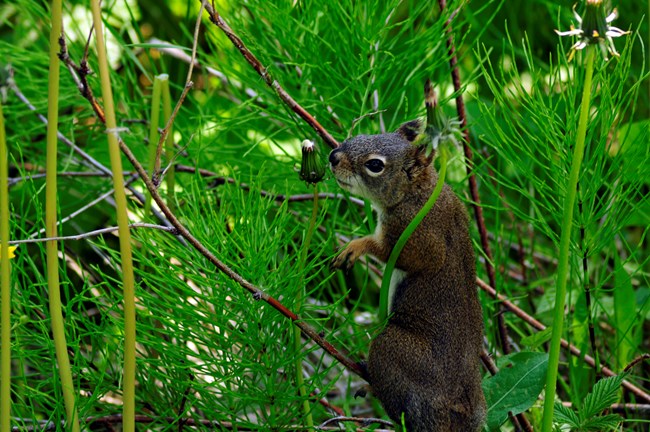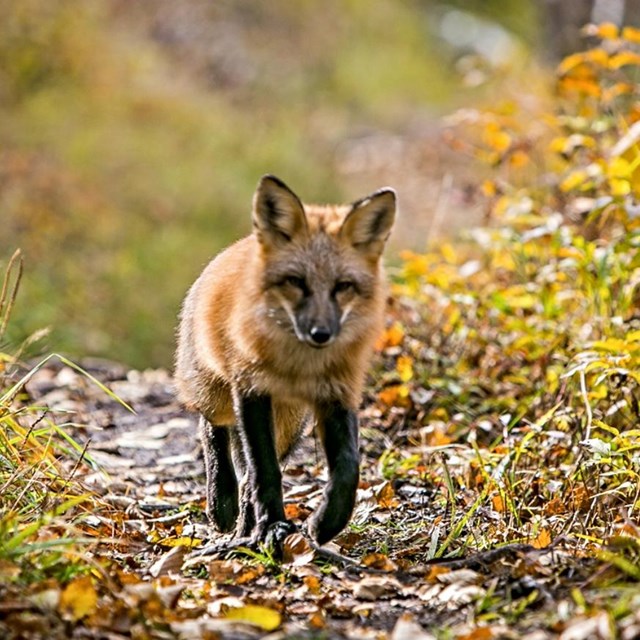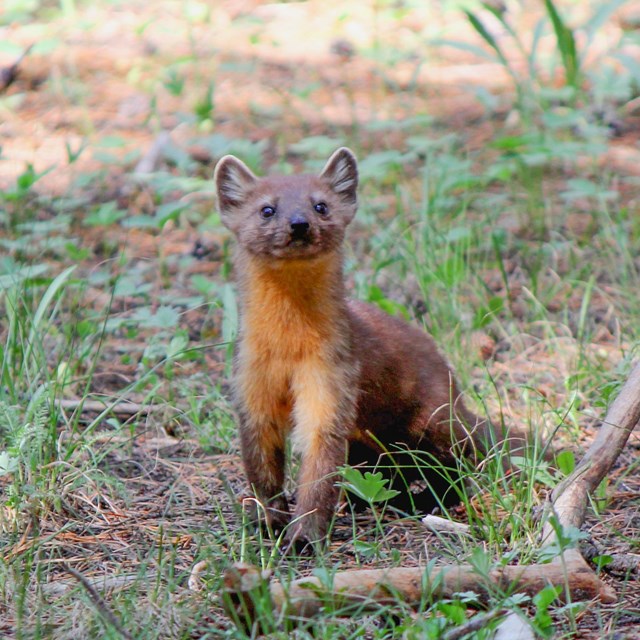
NPS / BRAD SMITH Anyone who comes to Isle Royale will have a chance to see its most visible mammal resident, the American red squirrel (Tamiasciurus hudsonicus). Unlike on the mainland they are the only squirrels and one of only a few rodents on Isle Royale. This lack of competition, along with a heavily forested habitat, has allowed these squirrels to fully populate the island. CharacteristicsAdult male and female red squirrels are the same size and can grow up to 14 inches in length including their long tail. The tail is used for balance while leaping from tree to tree, and their sharp, curved claws are used to cling to branches, bark, and even walls. They have a rust red to gray red coloration on their backs and tails, while their bellies are white.

NPS / PAUL BROWN Special Species?The Isle Royale American red squirrel was once thought of as its own subspecies. Through observation, comparison, and measurements, the island red squirrels were described as having differing coloration, body size and skull size; earning the designation of Isle Royale American red squirrel (Tamiasciurus hudsonicus regalis). Searching for Squirrels?American red squirrels are often abundant in conifer and mixed forests which allows them to call the entirety of Isle Royale home. They make nests in trees out of grass, leaves, and shredded bark. They feed heavily on seeds of spruce, fir, tamarack, hemlock and pine trees. A pile of cone remnants is usually a sign that a squirrel has dined there. They also enjoy deciduous tree seeds, tree sap and berries, often storing excess food in caches in trees or holes in the ground. These squirrels are known to search park buildings, trails, and campgrounds in search of food remnants and messes left by people.
|
Last updated: December 26, 2023



